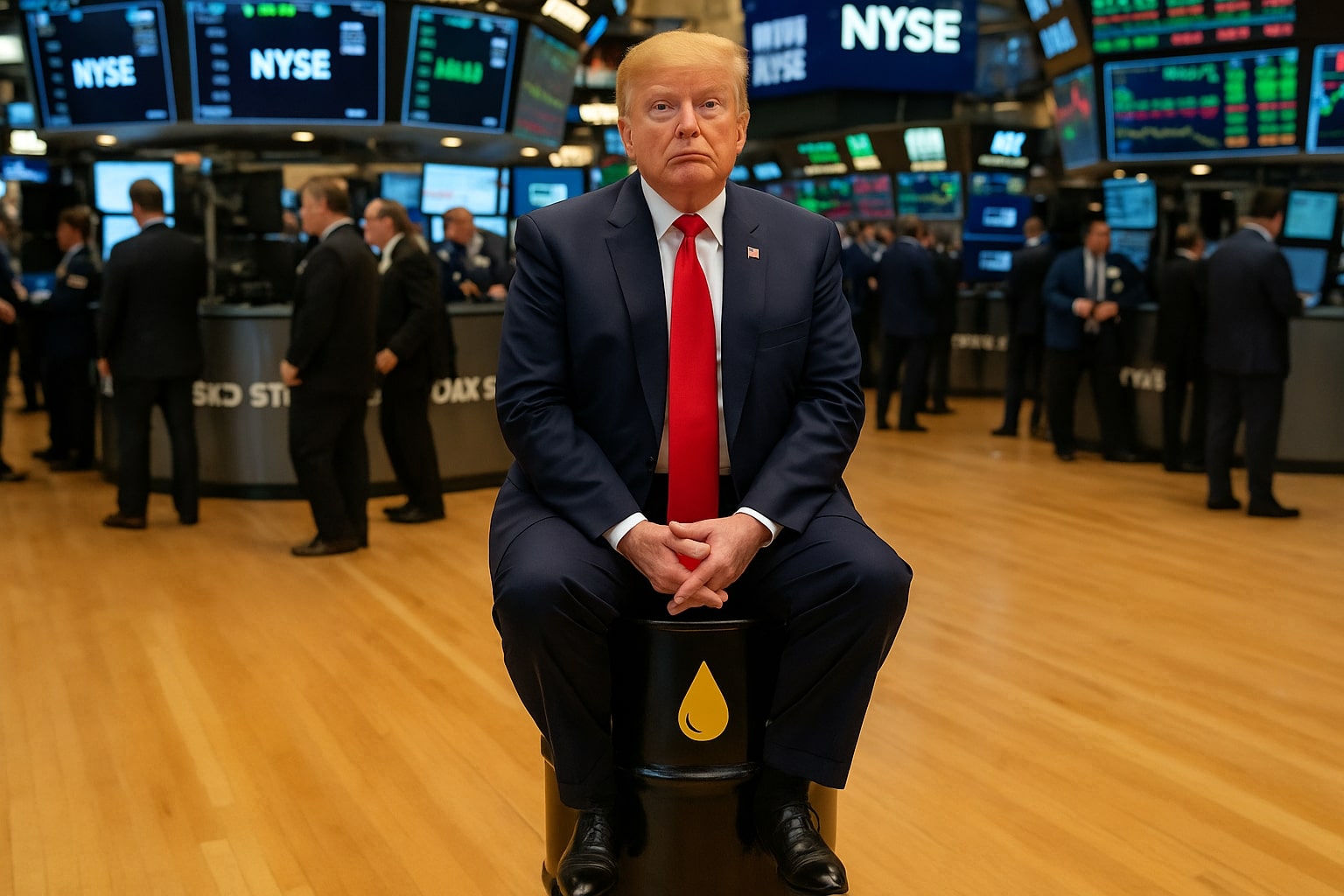
WTI and Brent Retreat Below $70 as War Premium Evaporates on Ceasefire Shift
CL=F hits $65.87, BZ=F down to $68.74 after Trump ceasefire cools Hormuz fears—BP tumbles 5%, Shell 4% as oil majors unwind gains | That's TradingNEWS
Crude Oil (CL=F, BZ=F) Slides Toward $65–$68 as War Premium Evaporates on Fragile Ceasefire
WTI and Brent Retreat Despite Early Spike: Geopolitics No Longer Bidding Up Oil
Oil prices have rapidly unwound last week's gains as the Middle East conflict shock faded into a politically fragile truce. West Texas Intermediate (CL=F) dropped to $65.87, down nearly 4%, while Brent (BZ=F) slid to $68.74, marking a nearly 5% drop from Monday’s close. Only days prior, Brent had touched highs near $78, as Tehran’s missile strike on U.S. assets in Qatar and Israeli retaliation had sent risk premiums soaring. Now, with Trump confirming a tentative ceasefire—though contested by both parties—the oil complex has repriced dramatically.
Ceasefire Neutralizes Hormuz Disruption Risk: Supply Chains Breathe, Prices Cool
Investors are no longer pricing in immediate disruption at the Strait of Hormuz, the critical chokepoint for nearly 20% of global oil flows. This channel, once seen as a prime target in the conflict escalation, now sits de-escalated. Brent’s pullback to $68.74 and WTI’s slide to $65.56 are rooted in the market's view that oil supply continuity is intact—for now. Analysts from Rystad suggest Brent may now stabilize near $70, barring a fresh flare-up. Goldman Sachs had previously warned of Brent breaking $100 in case of a Hormuz blockade, but that scenario looks shelved.
Volatility Dominates Price Action: From $81 Spike to $64.50 Collapse in Days
Brent hit $81 just last week, before Iran's calibrated missile response caused panic buying. But Tuesday saw oil fall back to $66.44, a level not seen since early June, erasing nearly all war-induced gains. The drop accelerated after Trump’s public ceasefire statement and a surge in equities across Asia, Europe, and the U.S. The Dow jumped +515 points, S&P 500 gained +1.12%, and Nasdaq climbed +1.5%, signaling a broad risk-on move as energy fears retreated. Even the FTSE 100, heavily weighted by oil majors like BP and Shell, struggled as those same energy names collapsed: BP fell over 5% to 366p, and Shell dropped 4%.
Middle East Calm Unlikely to Last, Markets Still Wary of Breakdowns
Despite the current reprieve, markets remain deeply aware of how fast sentiment could flip. Israel has already accused Iran of ceasefire violations, while Iran denies this and warns against future "aggression." The rapid rebound from $64.50 to $69.67 within 24 hours of ceasefire headlines shows how sensitive oil remains to narrative shifts. Traders now brace for further headlines rather than fundamental flows, which remain unchanged.
Oil Majors Hit Hard: FTSE 100 and Global Energy Stocks Under Pressure
The war premium helped support integrated majors for weeks, but that tailwind has reversed violently. In London, the FTSE 100 barely moved, up just 0.3%, as BP and Shell weighed it down. U.S. and European equities saw gains driven by airlines and transport stocks now benefiting from cheaper jet fuel costs. EasyJet and IAG rose 6–7%, while refining margins fell amid cheaper crude input prices. Brent’s current price of $69.67, still down 2.5% intraday, underscores this theme of risk reversal.
Market Structure Shifts: From Risk Aversion to Repricing Normalcy
Open interest in oil futures has remained steady, but implied volatility spiked, then crashed, mirroring war-on/wear-off headlines. As of Tuesday, implied volatility in Brent fell below 40%, down from 56% last week. Traders appear to be pivoting from fear-driven positioning to recalibrated risk models, now pricing in a higher probability of supply stability.
US Dollar Rebounds, Commodities Lag: Macro Trends Reassert Control
The U.S. Dollar Index rose modestly to 98.10, erasing part of Monday's dip after Iran’s strike on U.S. assets. Crude, being dollar-priced, felt the sting of greenback strength. Euro gained slightly (+0.25%), while the yen weakened (-0.48%), adding another dimension to oil repricing as macro forces like FX and global yields assert more influence over commodity flows.
Outlook Hinges on Trust in Ceasefire: Prices Fragile Below $70
Current pricing suggests markets believe the ceasefire could hold, but not without skepticism. Brent hovering near $68 and WTI near $65 implies risk-on trades are cautiously in motion but easily reversible. With the Strait of Hormuz operating normally, the threat of supply shock has receded. But one misstep—like a renewed missile exchange—could reinsert the war premium instantly.
Verdict: CL=F and BZ=F Are a Hold While Prices Consolidate Below Key Resistance
The sharp drawdown from $81 to the mid-$60s suggests oil markets have overreacted in both directions. Structural supply remains tight, and OPEC+ has not adjusted production. Demand remains stable, but headline sensitivity dominates pricing. For now, WTI (CL=F) and Brent (BZ=F) are a Hold, as technicals reset, and macro signals regain control. Traders should monitor price zones around $70 for resistance and $64 for support while watching geopolitical catalysts minute-by-minute.
That's TradingNEWS
Read More
-
SCHD ETF Price at $27: Can SCHD’s 4% Yield and 9.15% Dividend Growth Beat High-Yield Covered Call ETFs?
15.12.2025 · TradingNEWS ArchiveStocks
-
XRP ETFs Close on $1B Inflows as XRPI at $10.92 and XRPR at $15.52 Hit 52-Week Lows
15.12.2025 · TradingNEWS ArchiveCrypto
-
Natural Gas Price Forecast: NG=F Holds the $4 Floor as Oversupply Clashes with 2026 LNG Demand
15.12.2025 · TradingNEWS ArchiveCommodities
-
USD/JPY Price Forecast - Dollar to Yen At 155: Yen Strength Builds As BoJ Hike And NFP Collide
15.12.2025 · TradingNEWS ArchiveForex



















